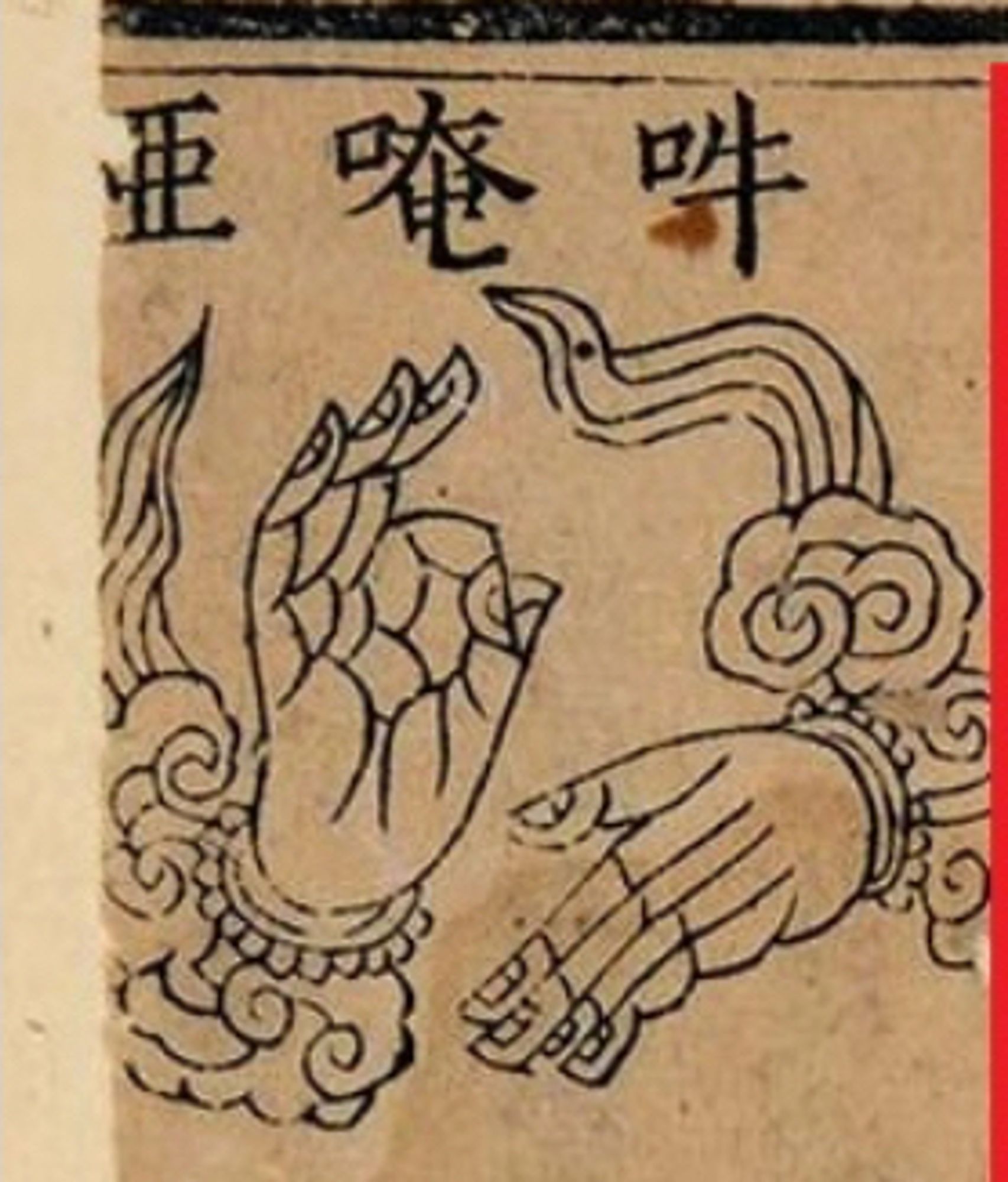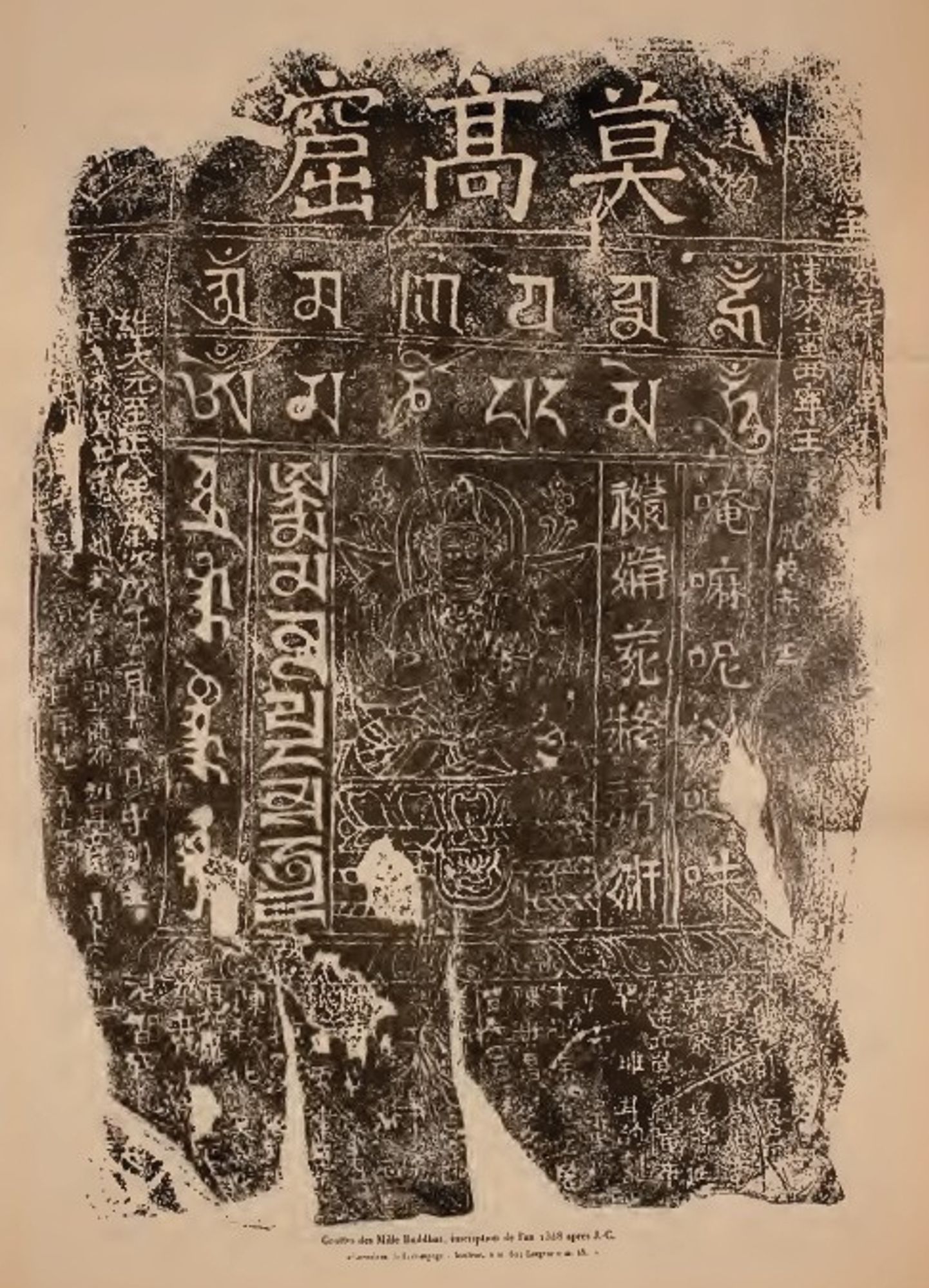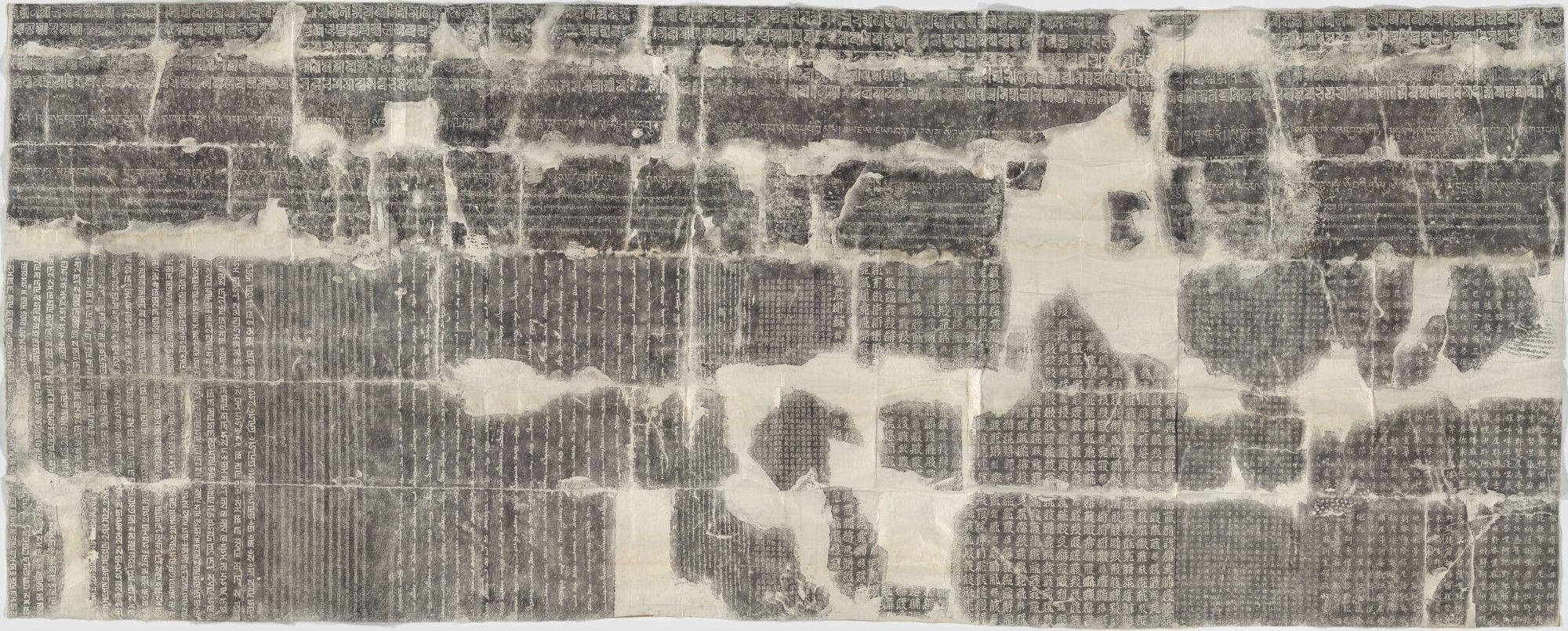The rite performed in both instances is the 瑜伽焰口 Yujia Yankou rite-- the Yoga Burningmouth rite, used to feed hungry ghosts. The surviving portions of the tangut manual and the modern version are very close to one another babelstone.co.uk/Twitter/Arch...
For ghost festival, The Mudra for Leaving Fear Tathagata 離怖畏如來 as depicted in a Tangut Esoteric Buddhist ritual manual and the same Mudra demonstrated by Master Tianrong 天融, in Singapore, 2019 From @babelstone.bsky.socialbabelstone.co.uk/Twitter/Arch...youtu.be/IcZDESv_CmI?... respectively


I like hoaxes as much as anyone, but they have no place on Wikipedia (when I die it will be because a Tangut stele fell onto me)
This layout matches the layout of the inscriptions of the Buddhist mantra Oṃ maṇi padme hūm̐ in six scripts on the Stele of Sulaiman, erected at the Mogao Caves in 1348, with Lanydza and Tibetan on the top, Old Uyghur and Phags-pa on the left, and Chinese and Tangut on the right

These are early-to-mid 20th-century rubbings of the inscriptions, showing Lanydza and Tibetan running horizontally along the top, Phags-pa and Old Uyghur in vertical columns running left-to-right on the left side, and Chinese and Tangut in vertical columns running right-to-left on the right side


Constructed between 1342 and 1345, at the command of the last Yuan emperor, Toghon Temür (Emperor Huizong, r. 1333–1368), each of the inner walls of the arch were engraved with Buddhist iconography and texts in six scripts: Lanydza (for Sanskrit), Tibetan Phags-pa, Old Uyghur, Tangut, and Chinese

counterpoint: traditional Chinese writing is as clear as Hangul compared to the Tangut script, which was designed by sadistic optometrists who also wanted to test the Saussurean limits of linguistic arbitrariness.
Interesting, I hadn't really been aware of the lack of box components in Tangut but now you said it, it's fairly obvious! Cheers 🙃
Well, except for one character (⿰彡丰) which looks quite like Tangut 𗢳, it is on the whole remarkably un-Tangut-like. Remember, Tangut has absolutely no box components (口日目田 etc), so any made-up script with box components fails the Tangut test